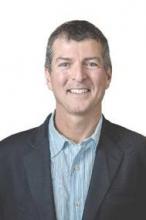Differing credentialing processes are challenging for doctors who practice telehealth, agreed telemedicine hospitalist Dr. Dana Giarrizzi of Eagle Hospital Physicians in Atlanta, which provides hospitalist services to hospitals and health systems nationwide via telehealth.
“The credentialing is certainly difficult at times,” Dr. Giarrizzi said. “It is a long process and sometimes requires fingerprints, taking exams, and other involved steps. It is very time consuming, and each state and certainly [each] facility can have different criteria, which makes it hard to know.”
To ensure its doctors are meeting the requirements of each facility, Eagle Hospital Physicians has its own credentialing department that works with hospitals to learn their processes and verify its physicians adhere to the rules, Dr. Giarrizzi said.
Preventing telemedicine lawsuits
To mitigate potential risks of telemedicine, doctors should clearly define protocols for use of webcams and Web-based portals and ensure such systems are secure, Mr. Cahill said. Take time to learn what constitutes the practice of medicine in each state in which doctors are delivering care, and carefully adhere to those rules, he added. Physicians also should have mechanisms in place to protect the privacy of individuals who do not want to be seen on camera, such as staff or family members.
It’s also critical to confer with malpractice insurance providers to confirm that telehealth services are covered, said Mr. Quashie, a member of the Legal Resource Team at CTeL. If telemedicine is not covered, physicians may want to buy a separate policy from another company that covers telehealth.
If physicians opt to work for a larger telemedicine company, they should check what controls the company has in place to protect them from lawsuits.
For example, national telemedicine company Teladoc has numerous safeguards in place to promote quality care and protect its doctors from claims, said Dr. Henry DePhillips, Teladoc’s chief medical officer. The company has National Committee for Quality Assurance certification, along with proprietary, evidence-based clinical practice guidelines for its physicians, a peer-review quality assurance committee, and regular data and medical reviews, Dr. DePhillips said. Teladoc is close to surpassing its 1-millionth consult and has not had a single claim filed in its history, he added.
Dr. DePhillips stressed that telemedicine is not a separate practice of medicine, and that best practices should remain the same, no matter the location.
“The bottom line is the standard of care for the diagnosis and treatment of these medical problems is the standard of care regardless whether you’re seeing the person in person, in an urgent care center, or through a secure video,” Dr. DePhillips said. “The doctor has to be able to comply with the standard of care and make a decision [about] whether that setting and that equipment at his or her disposal are adequate to make an accurate diagnosis and a medically appropriate treatment plan.”
On Twitter @legal_med


